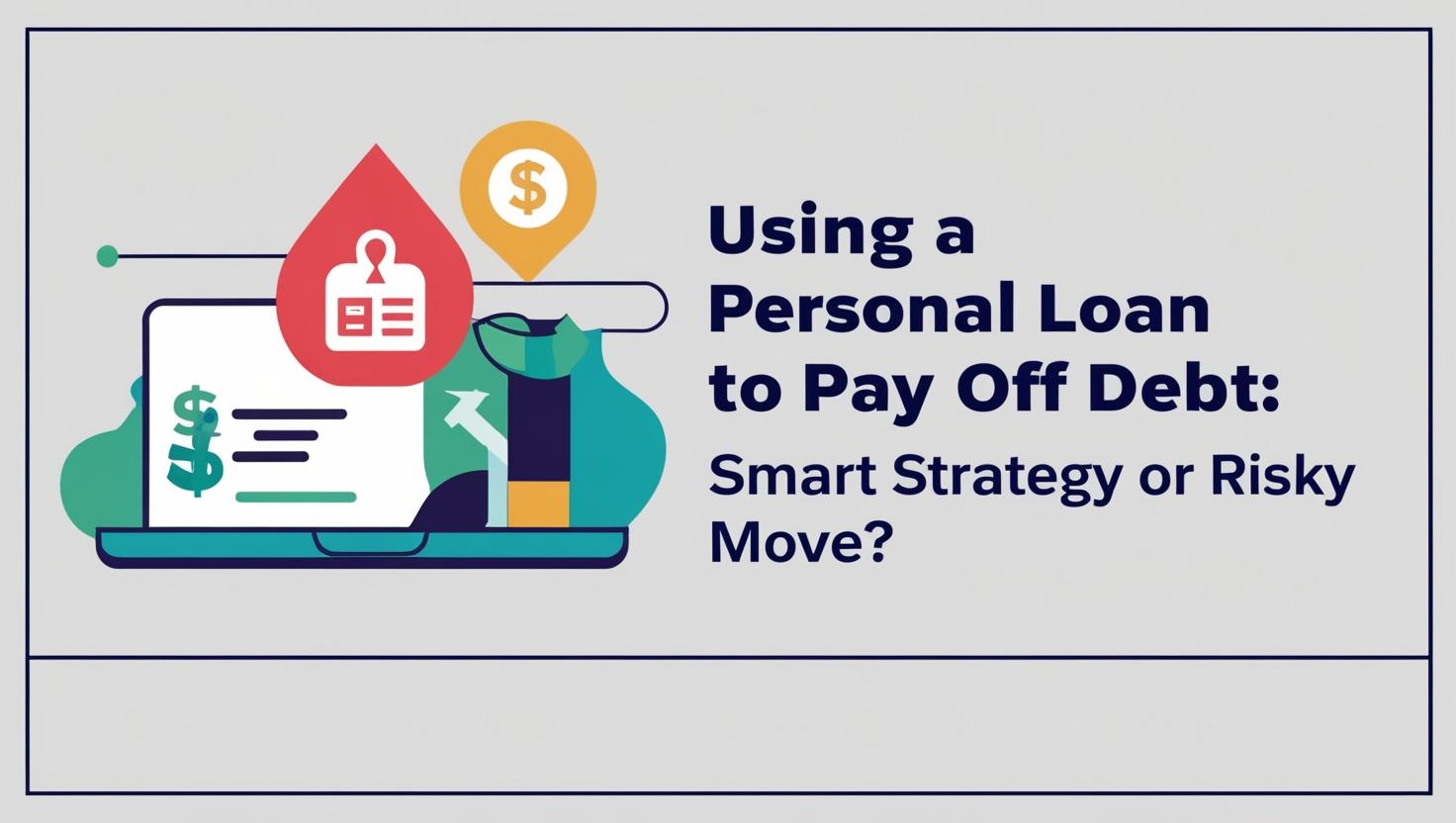Did you know the cryptocurrency market’s total value once surpassed $3 trillion? This staggering figure highlights the growing interest in digital assets like Bitcoin and Ethereum. However, this market is known for its extreme volatility, offering both significant opportunities and risks.
Before diving into this space, it’s crucial to have your finances in order. The crypto world moves fast, and prices can swing dramatically in a single day. Understanding the basics, such as how blockchain technology works, can help you make informed decisions.
For example, Bitcoin and Ethereum have experienced both massive gains and severe drops. These examples show why research and caution are essential. This section will guide you through the fundamentals, helping you prepare mentally and financially for the risks ahead.
Key Takeaways
- The crypto market is highly volatile, offering both opportunities and risks.
- Bitcoin and Ethereum are key digital assets with significant market influence.
- Financial preparation is essential before entering this space.
- Research and understanding of blockchain technology are crucial.
- Always approach crypto with caution and a clear strategy.
Understanding Cryptocurrency and the Market
Crypto has reshaped how we think about money and transactions in the modern era. At its core, it’s a digital asset secured by cryptography, making it nearly impossible to counterfeit. Unlike traditional currencies, it operates on a decentralized network called blockchain, which records every transaction securely and transparently.
Blockchain technology is the backbone of crypto. It ensures that every transaction is verified and recorded across a network of computers. This eliminates the need for intermediaries like banks, making transactions faster and often cheaper. For example, sending Bitcoin across the globe can take minutes, regardless of the amount.
What is Cryptocurrency?
Cryptocurrency is a form of digital money designed to work as a medium of exchange. It uses cryptographic techniques to secure transactions and control the creation of new units. Bitcoin, the first and most well-known crypto, was created in 2009. Since then, thousands of alternatives, called altcoins, have emerged, including Ethereum, which introduced smart contracts.
- Bitcoin: The pioneer, often referred to as digital gold.
- Ethereum: Known for its smart contract functionality.
- Altcoins: Other coins like Dogecoin and Litecoin offer unique features.
Market Volatility and Trends
The crypto market is known for its extreme volatility. Prices can skyrocket or plummet within hours. For instance, Bitcoin surged to nearly $65,000 in 2021, only to drop to $20,000 a year later. This volatility presents both opportunities and risks for traders and investors.
Several factors influence these trends. Technological advancements, regulatory changes, and market sentiment all play a role. For example, when a country like El Salvador adopted Bitcoin as legal tender, it boosted its value. Conversely, bans in countries like China have caused significant drops.
Understanding these dynamics is crucial. Whether you’re trading short-term or investing long-term, staying informed helps you manage risk and make better decisions. The crypto world is fast-paced, but with the right knowledge, you can navigate it confidently.
Cryptocurrency Investing for Beginners: Essential Steps to Get Started
Starting your journey in the crypto space can feel overwhelming, but breaking it down into simple steps makes it manageable. The first step is to educate yourself on the basics. Understanding how blockchain technology works and what makes crypto unique will give you a solid foundation.
Key Concepts Every Beginner Should Know
Before you dive in, familiarize yourself with key terms. Blockchain is the technology behind crypto, ensuring secure and transparent transactions. A digital wallet is where you store your coins, and it’s crucial to choose one with strong security features.
There are different types of coins, like Bitcoin and Ethereum. Bitcoin is often called digital gold, while Ethereum is known for its smart contract functionality. Knowing these differences helps you make informed decisions.
First Steps in Your Crypto Journey
Start by setting up an account on a reputable exchange. Verify your identity to ensure security. Once your account is ready, begin with a small investment. This minimizes risk while you learn the ropes.
Research is key. Look into various coins and their potential. Track market trends to understand how prices fluctuate. Setting realistic expectations will help you stay focused and avoid impulsive decisions.
| Step | Action | Tips |
|---|---|---|
| 1 | Educate Yourself | Learn about blockchain and crypto basics. |
| 2 | Set Up a Wallet | Choose a secure wallet for storage. |
| 3 | Open an Exchange Account | Verify your identity for added security. |
| 4 | Start Small | Invest only what you can afford to lose. |
| 5 | Research Coins | Understand the potential of each coin. |
Managing risk is essential. The crypto market is volatile, and prices can change rapidly. By starting small and staying informed, you can navigate this exciting space with confidence.
Setting Up Your Financial Foundation for Crypto Investment

Before jumping into the world of digital assets, it’s vital to ensure your finances are in order. The crypto market is unpredictable, and prices can swing dramatically. Without a solid financial base, you could face significant losses. This section will guide you through building an emergency fund and budgeting for risk.
Building an Emergency Fund
An emergency fund is your safety net. It ensures you have enough cash to cover unexpected expenses without dipping into your investments. In the volatile crypto market, this is especially important. For example, if prices drop suddenly, you won’t be forced to sell at a loss.
Start by setting aside three to six months’ worth of living expenses. Keep this money in a liquid account, like a savings account. This way, you can access it quickly if needed. Having this cushion allows you to invest with confidence, knowing you’re prepared for the unexpected.
Budgeting for Risk in Your Investment Strategy
When dealing with digital assets, risk management is key. Separate the money you use for daily expenses from what you allocate to crypto. This prevents you from overexposing your finances to the market’s volatility.
Only invest what you can afford to lose. For instance, if you have $10,000 in savings, consider allocating a small percentage, like 5-10%, to crypto. This limits potential losses while still giving you exposure to the market. Stick to your budget, even when prices surge, to avoid impulsive decisions.
| Step | Action | Tips |
|---|---|---|
| 1 | Build an Emergency Fund | Save 3-6 months’ worth of expenses. |
| 2 | Separate Funds | Keep daily expenses and investments separate. |
| 3 | Set a Budget | Invest only what you can afford to lose. |
| 4 | Stay Disciplined | Avoid emotional trading during market swings. |
By following these steps, you can manage risk effectively. A strong financial foundation ensures you’re ready to navigate the ups and downs of the crypto market. Stay disciplined, and always prioritize your financial security.
Researching and Selecting Your Cryptocurrencies
With so many digital assets available, choosing the right ones requires careful research. While Bitcoin and Ethereum dominate the market, thousands of other coins offer unique opportunities. Understanding how to evaluate these options is key to building a strong portfolio.
Evaluating the Investment Case for Different Coins
Start by analyzing the fundamentals of each coin. Look at its technology, use case, and historical performance. For example, Ethereum’s smart contract functionality sets it apart, while Bitcoin’s scarcity makes it a store of value.
Check the coin’s market capitalization and supply dynamics. Coins with limited supply often have higher potential for value growth. Use credible resources like white papers and official project websites to verify claims.
- Technology: Assess the underlying blockchain and its scalability.
- Use Case: Determine how the coin solves real-world problems.
- Market Trends: Study historical price movements and market sentiment.
Understanding Altcoins and Token Variations
Altcoins, or alternative coins, include everything beyond Bitcoin. Some, like Ethereum, offer unique functionalities. Others, like Dogecoin, started as memes but gained significant traction. Tokens, on the other hand, are built on existing blockchains and serve specific purposes.
For instance, DeFi platforms like Uniswap use tokens to facilitate transactions. Understanding the difference between coins and tokens helps you make informed decisions. Always research the team behind the project and their track record.
Here’s a quick comparison:
| Type | Example | Functionality |
|---|---|---|
| Coin | Bitcoin | Store of value |
| Token | Uniswap (UNI) | DeFi transactions |
By focusing on research and understanding the nuances of each asset, you can make smarter choices in the crypto market. Stay informed, and always verify the quality of your investments.
Developing Your Trading Strategy and Managing Risk

Navigating the crypto market requires a solid trading strategy and effective risk management. The market’s volatility can lead to significant gains or losses, making it essential to have a clear plan. Whether you’re a seasoned trader or just starting, understanding different strategies and risk control methods is key to success.
Implementing Risk Management Techniques
Risk management is crucial in the crypto market. One effective method is using stop-loss orders. These automatically sell your asset if the price drops to a certain level, limiting potential losses. Another approach is setting margin limits, which ensures you don’t overextend your funds.
Diversification is also vital. Avoid putting all your money into one asset. Spread your investments across different coins to reduce risk. For example, balancing Bitcoin and Ethereum can help stabilize your portfolio during market swings.
Deciding Between Long-Term and Short-Term Trading
Your trading strategy depends on your goals and risk tolerance. Long-term trading, or HODLing, involves holding assets for months or years. This strategy benefits from long-term price appreciation but requires patience.
On the other hand, short-term trading focuses on quick profits. Day trading or swing trading can be lucrative but demands constant market monitoring. Use analytical tools like moving averages and RSI to track price movements and make informed decisions.
Here’s a quick comparison of the two approaches:
| Strategy | Pros | Cons |
|---|---|---|
| Long-Term | Less time-intensive, potential for significant gains | Requires patience, vulnerable to market downturns |
| Short-Term | Quick profits, flexibility | High risk, requires constant attention |
Whichever strategy you choose, stick to your plan and avoid emotional decisions. The crypto market is unpredictable, but with the right approach, you can manage risk and seize opportunities.
Understanding Blockchain Technology and Security Measures
Blockchain technology is the backbone of digital currencies, ensuring secure and transparent transactions. At its core, it’s a decentralized network that records every transaction across multiple computers. This makes it nearly impossible to alter or hack, providing a high level of security for your crypto assets.
How Blockchain Secures Transactions
Blockchain uses cryptography to protect data. Each transaction is verified by a network of computers, known as nodes, and added to a block. Once a block is full, it’s linked to the previous one, forming a chain. This process ensures that every transaction is permanent and tamper-proof.
For example, Bitcoin’s blockchain hashes data at a rate of around 640 exahashes per second. Ethereum, on the other hand, uses a Proof of Stake (PoS) system, which is more energy-efficient. Both systems highlight the robustness of blockchain technology.
Choosing the Right Wallet and Storage Solutions
Your wallet is where you store your crypto. There are two main types: hot wallets (connected to the internet) and cold wallets (offline storage). Hot wallets are convenient for frequent transactions, but cold wallets offer better security for long-term storage.
When selecting a wallet, consider features like two-factor authentication and backup options. Hardware wallets, like Ledger and Trezor, are popular for their robust security measures. Always safeguard your private keys, as losing them means losing access to your assets.
Recent security breaches, such as phishing attacks, highlight the importance of vigilance. Always verify the authenticity of emails and websites before entering sensitive information. By following these best practices, you can protect your crypto investments effectively.
Exploring CFD Trading and Alternative Investment Methods
CFD trading offers a unique way to engage with the crypto market without owning the assets. Contracts for Difference (CFDs) allow you to speculate on price movements, making them a popular choice for traders. Unlike direct buying, CFDs don’t require you to hold the actual cryptocurrency, offering flexibility and faster transaction times.
This method is particularly appealing for those looking to diversify their investment strategies. Whether you’re interested in Bitcoin or other digital assets, CFDs provide opportunities to profit from both rising and falling markets. However, it’s essential to understand the risks involved, especially with leveraged trading.
Differences Between CFD Trading and Direct Buying
When you buy crypto directly, you own the asset and can store it in a wallet. With CFDs, you’re trading on price movements without ownership. This means you can take advantage of market fluctuations without worrying about storage or security.
For example, if you believe Bitcoin’s price will rise, you can open a long position. If you think it will fall, a short position allows you to profit from the decline. This flexibility is one of the main reasons traders choose CFDs over direct buying.
Leveraged Trading: Opportunities and Pitfalls
Leveraged trading amplifies your potential returns by allowing you to control larger positions with a smaller amount of capital. For instance, with 10:1 leverage, a $100 investment can control a $1,000 position. While this can lead to significant profits, it also increases the risk of losses.
Managing risk is crucial in leveraged trading. Using stop-loss orders can help limit potential losses by automatically closing a position at a predetermined price. This ensures you don’t lose more than you can afford.
Here’s a quick example: If you open a long position at $10,000 and the price drops to $9,500, a stop-loss order can close the trade, preventing further losses. Always set realistic expectations and stick to your strategy.
CFDs also come with fees and spreads, which can impact your overall returns. Be sure to research the platform you’re using and understand the costs involved. By staying informed and disciplined, you can navigate the CFD market effectively and make the most of its opportunities.
Monitoring and Evaluating Your Investment Performance
Keeping track of your crypto investments is essential for long-term success. The market moves quickly, and staying informed helps you make better decisions. Regular evaluation ensures your strategy aligns with your goals.
Tracking Market Trends and Adjusting Your Strategy
Market trends can change rapidly, so monitoring them is crucial. Use tools like candlestick charts and moving averages to spot patterns. For example, if Bitcoin’s price shows a consistent upward trend, it might be a good time to hold or buy more.
Adjust your strategy based on these trends. If the market becomes volatile, consider setting tighter stop-loss orders. This minimizes potential losses while allowing you to capitalize on opportunities.
“The key to success in crypto is adaptability. Markets evolve, and so should your approach.”
Using Analytical Tools to Measure Returns
Analytical tools are invaluable for measuring your returns. Platforms like TradingView offer detailed charts and indicators. These tools help you understand how your investments are performing over time.
Set benchmarks to evaluate your success. For instance, aim for a 10% return over six months. If you’re not meeting these goals, reassess your strategy. Tools like the Relative Strength Index (RSI) can indicate whether an asset is overbought or oversold, helping you make informed decisions.
Here’s a quick guide to using analytical tools effectively:
| Tool | Purpose | Example |
|---|---|---|
| Candlestick Charts | Track price movements | Identify trends in Bitcoin’s price |
| RSI | Measure asset momentum | Determine if Ethereum is overbought |
| Moving Averages | Identify support/resistance levels | Predict future price movements |
By regularly reviewing your performance and adapting your strategy, you can navigate the crypto market with confidence. Stay disciplined, and always prioritize informed decision-making.
Conclusion
Entering the world of digital assets requires a blend of strategy, research, and caution. By starting small and focusing on crypto fundamentals, you can build a solid foundation for success. Always prioritize understanding the market and its trends to make informed decisions.
Risk management is key. Never invest more than you can afford to lose, and diversify your portfolio to minimize potential losses. Tools like stop-loss orders and analytical platforms can help you stay on track.
Continuous learning is essential. The crypto space evolves rapidly, and staying informed ensures you adapt to changes effectively. Whether you’re exploring Bitcoin or other assets, a disciplined approach will help you seize opportunities while managing risk.
Remember, successful investing combines strategy and prudence. Take action with confidence, and always stay updated on emerging trends. With the right mindset and tools, you can navigate this dynamic space effectively.
FAQ
Q: What is cryptocurrency?
A: Cryptocurrency is a type of digital asset that uses blockchain technology to secure transactions. Unlike traditional money, it operates independently of central banks and governments.
Q: How does market volatility affect crypto?
A: The crypto market is known for its high volatility, meaning prices can change rapidly. This can create opportunities for profit but also increases the risk of loss.
Q: What are the first steps to start investing in crypto?
A: Begin by researching the market, setting up a secure wallet, and choosing a reliable exchange platform. Start small to understand how trading works before committing larger amounts.
Q: Why is an emergency fund important before investing?
A: An emergency fund ensures you have cash set aside for unexpected expenses. This prevents you from needing to sell your crypto investments during market downturns.
Q: How do I choose the right crypto to invest in?
A: Evaluate factors like the coin’s use case, technology, and market trends. Research altcoins and tokens to diversify your portfolio and reduce risk.
Q: What’s the difference between long-term and short-term trading?
A: Long-term trading involves holding assets for months or years, while short-term trading focuses on quick profits. Your choice depends on your risk tolerance and goals.
Q: How does blockchain technology secure transactions?
A: Blockchain uses a decentralized network to record transactions, making them tamper-proof. This ensures transparency and security for all parties involved.
Q: What’s the difference between CFD trading and direct buying?
A: CFD trading allows you to speculate on price movements without owning the asset, while direct buying means you own the crypto. CFDs offer leverage but come with higher risks.
Q: How can I track my crypto investment performance?
A: Use analytical tools and platforms to monitor market trends and measure returns. Regularly review your strategy to make informed adjustments.







20 responses to “Start Cryptocurrency Investing for Beginners”
The analogy of Bitcoin as ‘digital gold’ truly resonates. It underscores Bitcoin’s value proposition as a store of value in the digital age
Highlighting the importance of understanding blockchain technology before investing is spot-on. Knowledge is indeed the best investment.
The emphasis on starting with a small investment is a prudent approach. It allows beginners to learn without significant financial risk.
Mentioning the volatility of the crypto market serves as a crucial reminder that potential high returns come with high risks.
The breakdown of different types of wallets and their security features is invaluable for safeguarding assets
Encouraging thorough research before investing in any coin aligns with the principle of due diligence in investing.
The comparison between Bitcoin and Ethereum provides clarity on their unique value propositions within the crypto ecosystem.
Addressing the impact of regulatory changes on crypto investments highlights the importance of staying informed about legal developments
The recommendation to use reputable exchanges for transactions emphasizes the need for security and reliability in trading platforms.
Discussing the role of market sentiment in price fluctuations offers insight into the psychological factors influencing crypto markets.
The caution against falling for ‘get-rich-quick’ schemes in crypto is a necessary warning for newcomers
Highlighting the significance of secure storage solutions, like hardware wallets, is crucial for asset protection.
The advice to stay updated with technological advancements in blockchain reflects the dynamic nature of the crypto space.
Emphasizing the importance of financial preparedness before investing ensures that individuals are ready to handle potential losses.
The suggestion to diversify investments within the crypto market aligns with traditional investment strategies to mitigate risk.
Addressing the tax implications of crypto investments reminds investors to consider legal obligations.
The focus on long-term investment strategies over short-term trading caters to those looking for sustained growth.
Encouraging community engagement through forums and groups fosters a supportive learning environment for beginners.
The inclusion of real-world examples of market trends provides practical context to theoretical knowledge
Stressing the need for a clear investment strategy before entering the market helps in setting realistic goals and expectations